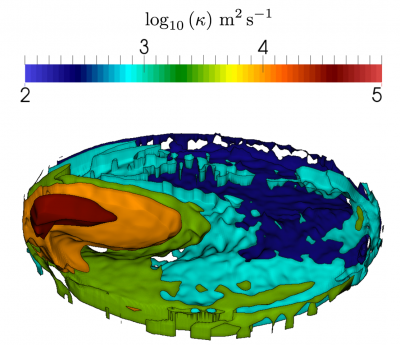Diagnosing Ocean Mixing via Lagrangian Particle Tracking (LIGHT)
Many scientists expect that carbon emitted from the burning of greenhouse gases and its accompanying heat will be predominantly sequestered within the deep ocean instead of the atmosphere. Understanding the mechanisms and quantifying the rate and variability of this sequestration has profound implications for predicting the rate of atmospheric warming over the next century. Los Alamos researchers created a super computer model to quantify the horizontal and vertical structure of mixing in the ocean and its dependence upon eddy velocities via high-performance Lagrangian particle tracking (LIGHT) within the Model for Prediction Across Scales Ocean (MPAS-O). The model computes ocean mixing directly from particle statistics to better understand the processes driving mixing and suggests improved methods to simulate them, which is vital for improved ocean and climate modeling.
This research used computational resources provided by the Los Alamos National Laboratory Institutional Computing facility. We thank Drs. Scott Reckinger and Sergey Danilov for helpful discussions during early preparation of this work and two anonymous reviewers for comments leading to an improved manuscript.

